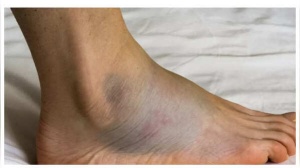The recent death of Indian actress Shefali Jariwala has sparked widespread concern. While the official cause of death is pending further investigation, initial reports suggest cardiac arrest. This incident highlights a disturbing trend of sudden heart-related deaths among seemingly healthy, middle-aged women.
Sudden Cardiac Death (SCD), once considered rare in young adults, is becoming increasingly prevalent, especially in India. This has prompted serious attention from the medical community. Cardiovascular diseases account for approximately 28% of all deaths in India, with nearly 10% attributed to SCD. A concerning number of these deaths occur in individuals between 30 and 50 years old.
India's evolving socioeconomic landscape has led to significant lifestyle changes. Sedentary behavior, processed foods, tobacco use, and increased stress levels are contributing to a rise in hypertension, obesity, diabetes, and coronary artery disease – all major risk factors for SCD.
While historically more common in men, recent studies emphasize the unique and often overlooked risks women face. Unlike men, women who experience SCD often have no prior diagnosis of heart conditions. Structural abnormalities, such as myocardial scarring and ischemic heart disease, frequently go undetected until post-mortem examinations. Furthermore, many women do not exhibit typical warning signs like chest pain or ECG abnormalities, making early detection extremely difficult.
Women in their 40s and 50s, similar to Shefali Jariwala, face a silent threat from underlying cardiac issues. In younger populations, SCD is often linked to inherited or electrical disorders such as:
These conditions often remain asymptomatic until a fatal arrhythmia occurs. Additional risk factors for this age group include left ventricular hypertrophy, obesity, and myocardial fibrosis. The progression of myocardial scarring and fibrosis can be attributed to cumulative exposure to cardiovascular risks, repeated micro-ischemic events, and hormonal changes, especially during perimenopause.
Conditions such as Myocardial Infarction with Non-Obstructive Coronary Arteries (MINOCA), which are more prevalent in younger women, often leave no trace in autopsies, further complicating diagnosis.
Stress played a significant role in Shefali Jariwala's life, having started her career as a teen star. Takutsobo cardiomyopathy (Broken Heart Syndrome), or Stress-induced Cardiomyopathy, is a major cause of SCD in women who multitask and experience emotional stress. Shefali also faced personal challenges due to her divorce, along with anxiety, depression, and epilepsy – all of which can intersect with cardiovascular health. Psychiatric medications, particularly those that prolong the QT interval, have also been linked to an increased risk of SCD.
Despite the seriousness of the issue, women are often underrepresented in preventive heart care. Symptoms like fatigue, palpitations, or breathlessness are frequently dismissed or misattributed, leading to delays in critical intervention. Unlike heart attacks, which are caused by blocked arteries, cardiac arrest results from electrical disturbances that cause the heart to stop abruptly. Immediate CPR and defibrillation are often the only lifesaving measures, highlighting the critical need for early risk identification.
Medical experts are now advocating for more targeted public health strategies. There is a need to enhance early screening tools specifically tailored to women, especially during perimenopause when cardiac risks increase.
The entertainment industry and fans mourn the loss of Shefali Jariwala. Her tragic passing serves as a stark reminder of an often-overlooked health crisis and the urgent need for systemic change in how women's heart health is addressed.
Shefali Jariwala captivated audiences with her presence on screen. Her untimely death can serve as a symbol of awareness, a reminder that the heart’s silence can be fatal, and that women's cardiac health requires immediate attention, investment, and action.
Newer articles
Older articles
 5 Overlooked Warning Signs of Colon Cancer: Early Detection Saves Lives
5 Overlooked Warning Signs of Colon Cancer: Early Detection Saves Lives
 Shukla's ISS Arrival Heralds New Era for Indian Space Exploration; Gaganyaan Mission Looms
Shukla's ISS Arrival Heralds New Era for Indian Space Exploration; Gaganyaan Mission Looms
 Vijay Sethupathi Apologizes Amid Controversy Over Son Surya's Film 'Phoenix'; Thalapathy Vijay's Support Revealed
Vijay Sethupathi Apologizes Amid Controversy Over Son Surya's Film 'Phoenix'; Thalapathy Vijay's Support Revealed
 Android Security Alert: Government Warns of Critical Flaws Exposing User Data
Android Security Alert: Government Warns of Critical Flaws Exposing User Data
 Ashada Gupt Navratri 2025: Dates, Significance, and How to Observe This Hidden Festival
Ashada Gupt Navratri 2025: Dates, Significance, and How to Observe This Hidden Festival
 Smith Eyes Grenada Test Return After Injury Layoff
Smith Eyes Grenada Test Return After Injury Layoff
 Skin Deep: 7 Warning Signs on Your Skin That Could Signal Heart Trouble
Skin Deep: 7 Warning Signs on Your Skin That Could Signal Heart Trouble
 Staying Hydrated May Significantly Lower Risk of Heart Failure, New Study Suggests
Staying Hydrated May Significantly Lower Risk of Heart Failure, New Study Suggests
 Moto G54 Price Slashed in India: Check Out the New, Lowered Costs
Moto G54 Price Slashed in India: Check Out the New, Lowered Costs
 Gambhir Sidelines Pant's Twin Tons After India's Test Loss, Emphasizes Team Performance
Gambhir Sidelines Pant's Twin Tons After India's Test Loss, Emphasizes Team Performance